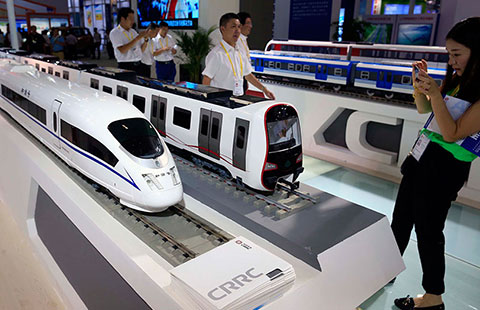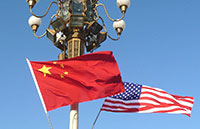Economy shows signs of resilience
By Zhou Feng (China Daily) Updated: 2015-08-03 09:05In June, added value of industry grew by 6.8 percent, a strong rebound from 6.1 percent in May, 5.9 in April and 5.6 in March. It points to continued recovery.
Fixed-asset investment increased by 11.4 percent, up from May's 9.9 percent, while retail sales of consumer goods jumped 10.6 percent in June, beating May's 10.1 percent and coming in as the second-best monthly performance of this year.
In June, the Purchasing Managers Index, a gauge of activity in the manufacturing sector, stood at 50.2 percent, the fourth consecutive month the index has stayed above 50, which indicated continued expansion.
Foreign trade also improved in June. Exports experienced the first monthly growth this year with an increase of 2.8 percent. Although total foreign trade continued to decline, by 6.1 percent, the rate was much narrower when compared with the previous month's 17.7 percent.
Recovery in one or two economic indicators may be incidental, but the recovery in all the major economic data reveals a common trend. That is, the economy is indeed recovering from its lowest level.
Looking ahead, there is more positive news on the horizon.
To come first is the boost from previous pro-growth measures. In the first half of the year, the government rolled out quite aggressive fiscal and monetary measures to spur the economy. On the fiscal front, the central government granted quotas for local governments to increase bond issuance and allowed bonds-for-debt swaps. It also approved many large infrastructure projects. In the railway, urban rail and airport industries alone, more than 800 billion yuan ($128.8 billion) worth of projects were given the green light. As these bonds/debt are spent and those projects advance, their boost to the economy will become visible in the second half.
On the monetary front, the People's Bank of China lowered the interest rates three times and reduced the required reserve ratios five times, helping inject liquidity into the capital market. Usually it takes three to six months for monetary policies to show effect. As such, it is reasonable to expect monetary loosening measures to translate into real economic growth beginning in July.
Additionally, from a technical perspective, China's economy is not as bad as some imagine. This is because the GDP figures usually record businesses above a designated size more accurately. But when it comes to small businesses, especially e-commerce businesses, their performance is not completely reflected in the statistics. For example, online sales of the retail industry may be higher than reported, given that a lot of e-transactions through P2P channels are not recorded.
Despite all the positive signs, there are still uncertainties facing the Chinese economy. Most notably, a slow recovery of the global economy remains the biggest challenge.
As China struggles in a transition from a big exporter to a big consumer, its economic growth still relies on foreign trade. Since consumption and investment have not made up for the loss of net exports, the Chinese economy will stand on solid turf only after net export growth comes back into a positive zone, which very much depends on how global demand recovers.
The author is a Shanghai-based financial analyst. The views do not necessarily reflect those of China Daily.
- 2015 China International Fair for Investment and Trade kicks off in Xiamen
- China's commodity imports robust in Jan-Aug period
- China stocks rebound 2.92%
- 2015 China box office already past 2014 total
- China foreign trade decline widens in August
- Interview: JP Morgan's senior executive bullish on China
- Innovation, development the focus for NZ mayors
- Lives of freelancers

















